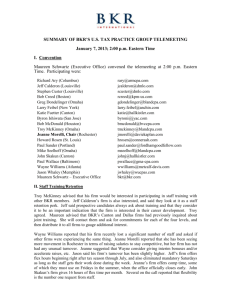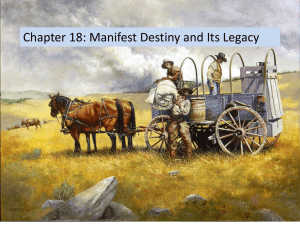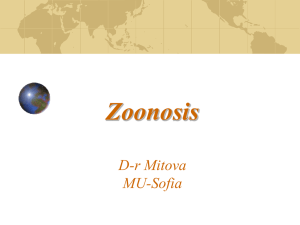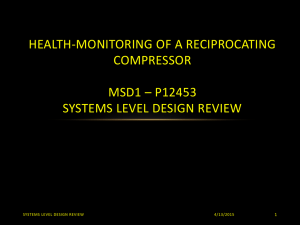tpj12745-sup-0018-Legends
advertisement
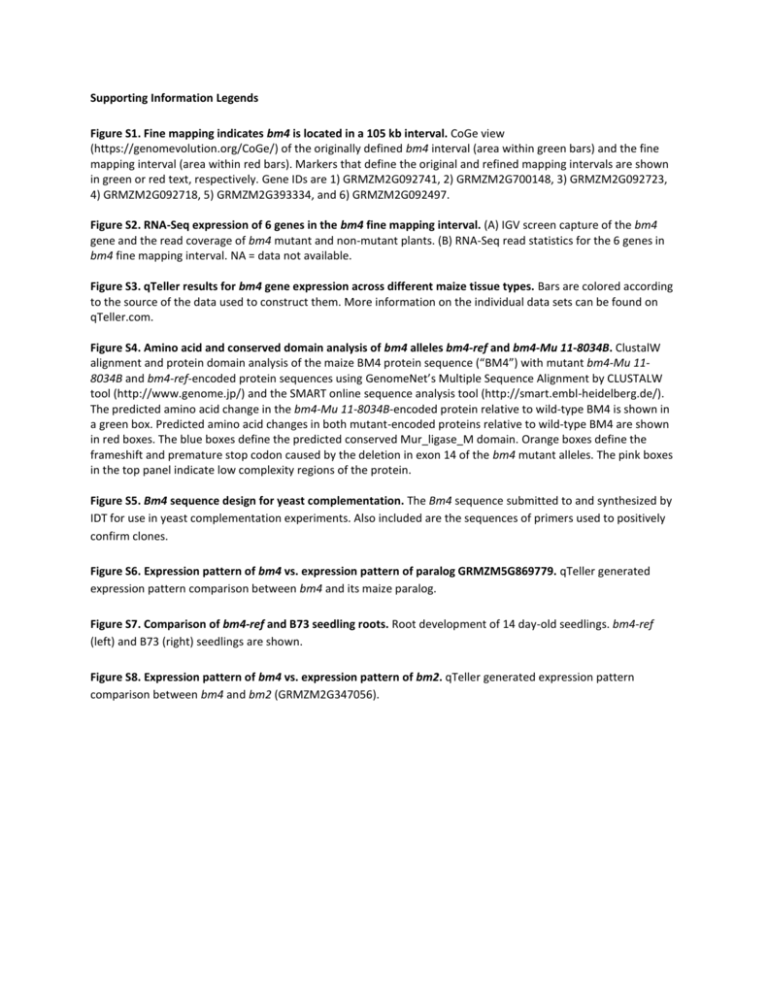
Supporting Information Legends Figure S1. Fine mapping indicates bm4 is located in a 105 kb interval. CoGe view (https://genomevolution.org/CoGe/) of the originally defined bm4 interval (area within green bars) and the fine mapping interval (area within red bars). Markers that define the original and refined mapping intervals are shown in green or red text, respectively. Gene IDs are 1) GRMZM2G092741, 2) GRMZM2G700148, 3) GRMZM2G092723, 4) GRMZM2G092718, 5) GRMZM2G393334, and 6) GRMZM2G092497. Figure S2. RNA-Seq expression of 6 genes in the bm4 fine mapping interval. (A) IGV screen capture of the bm4 gene and the read coverage of bm4 mutant and non-mutant plants. (B) RNA-Seq read statistics for the 6 genes in bm4 fine mapping interval. NA = data not available. Figure S3. qTeller results for bm4 gene expression across different maize tissue types. Bars are colored according to the source of the data used to construct them. More information on the individual data sets can be found on qTeller.com. Figure S4. Amino acid and conserved domain analysis of bm4 alleles bm4-ref and bm4-Mu 11-8034B. ClustalW alignment and protein domain analysis of the maize BM4 protein sequence (“BM4”) with mutant bm4-Mu 118034B and bm4-ref-encoded protein sequences using GenomeNet’s Multiple Sequence Alignment by CLUSTALW tool (http://www.genome.jp/) and the SMART online sequence analysis tool (http://smart.embl-heidelberg.de/). The predicted amino acid change in the bm4-Mu 11-8034B-encoded protein relative to wild-type BM4 is shown in a green box. Predicted amino acid changes in both mutant-encoded proteins relative to wild-type BM4 are shown in red boxes. The blue boxes define the predicted conserved Mur_ligase_M domain. Orange boxes define the frameshift and premature stop codon caused by the deletion in exon 14 of the bm4 mutant alleles. The pink boxes in the top panel indicate low complexity regions of the protein. Figure S5. Bm4 sequence design for yeast complementation. The Bm4 sequence submitted to and synthesized by IDT for use in yeast complementation experiments. Also included are the sequences of primers used to positively confirm clones. Figure S6. Expression pattern of bm4 vs. expression pattern of paralog GRMZM5G869779. qTeller generated expression pattern comparison between bm4 and its maize paralog. Figure S7. Comparison of bm4-ref and B73 seedling roots. Root development of 14 day-old seedlings. bm4-ref (left) and B73 (right) seedlings are shown. Figure S8. Expression pattern of bm4 vs. expression pattern of bm2. qTeller generated expression pattern comparison between bm4 and bm2 (GRMZM2G347056). Table S1. bm4 fine mapping scores Table S2. Summary of bm4 alleles Table S3. Seq-Walking targets in the bm4 fine mapping interval Table S4. Primer information for bm4 sequence and qRT-PCR analyses Table S5. Homologs of BM4 Table S6. Subcellular localization prediction for BM4 and protein homologs in other grasses Table S7. Markers used for bm4 fine mapping Dataset S1. SNP information for the bm4 gene across various lines Dataset S2. SNP information for bm4-Mu alleles and their progenitors

